鸥菲尔小镇 丹尼尔奥康奈尔大桥
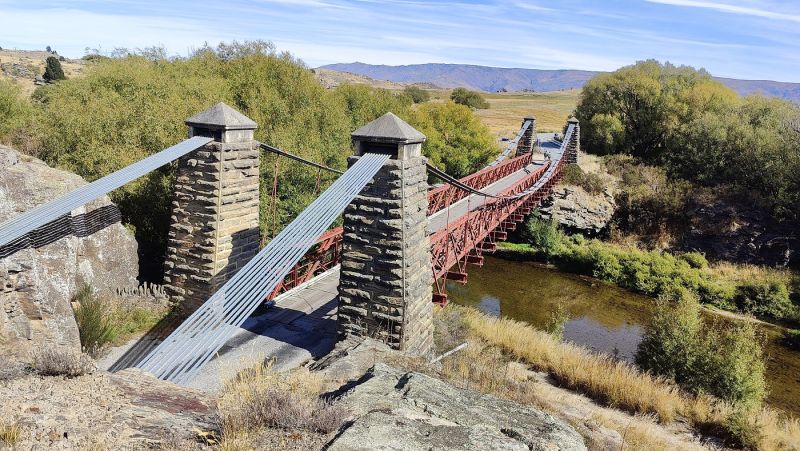
鸥菲尔小镇 丹尼尔奥康奈尔大桥
--2024新西兰游记73,南岛10日游54
杭州阿立
2024年7月13日
书接上集《克莱德小镇 红桥网红只有芸知道》:
https://overseaswindow.com/home/nodebody/38068/1592
告别克莱德小镇,下一站何处?
只有天舒哥知道:“前面是鸥菲尔小镇(Ophir),值得去看看。”
天舒哥掌舵,先不进村(进镇),在村口的古旧大桥前停下车来。
天舒哥:“这桥可比克莱德的电影红桥有名多了,真正有历史的旧桥。好莱坞电影也有在此拍摄的。”
历史古桥,不能偷懒远远的拍了,必须近前拍真相。
丹尼尔奥康奈尔大桥(Daniel O'Connell Bridge):
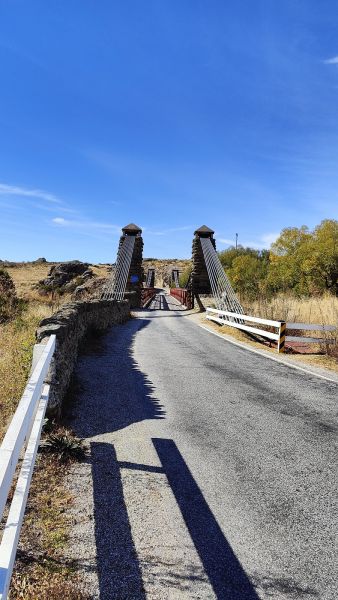
一路荒凉,此刻居然有车通过:
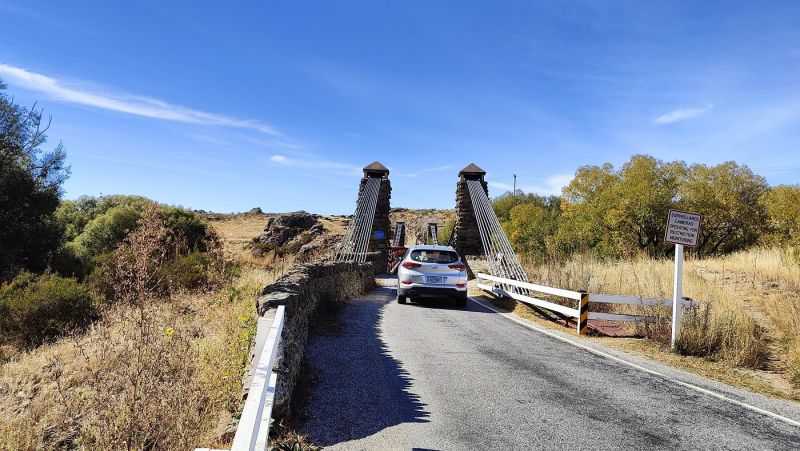
阿立注:这桥是单行道。两边都有车时,迟到的一方必须礼让、耐心等待。
到此一游:
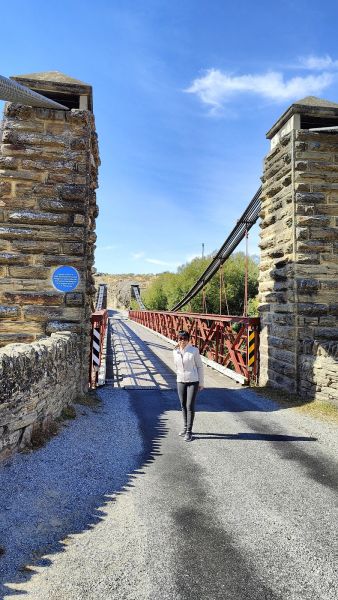
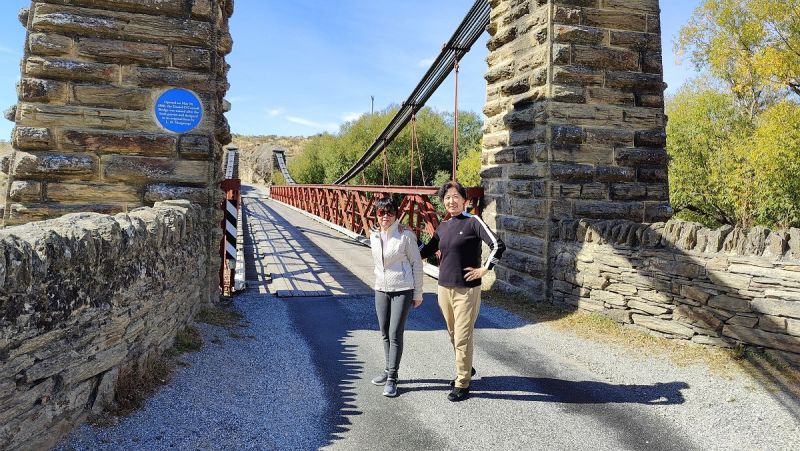
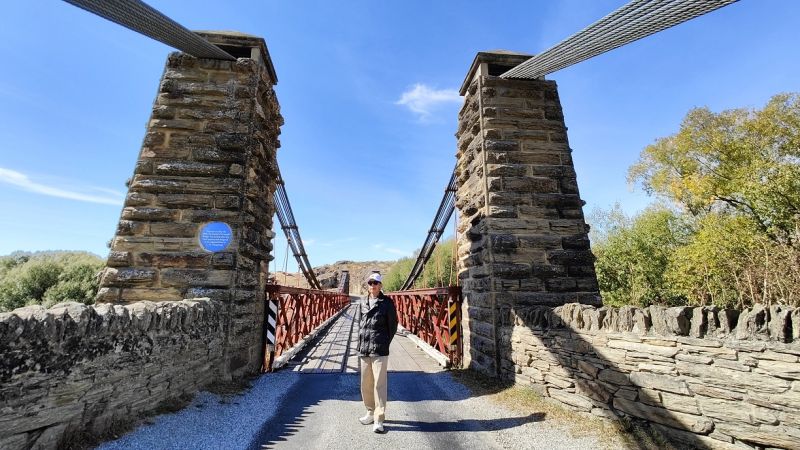

大桥1880年5月启用:
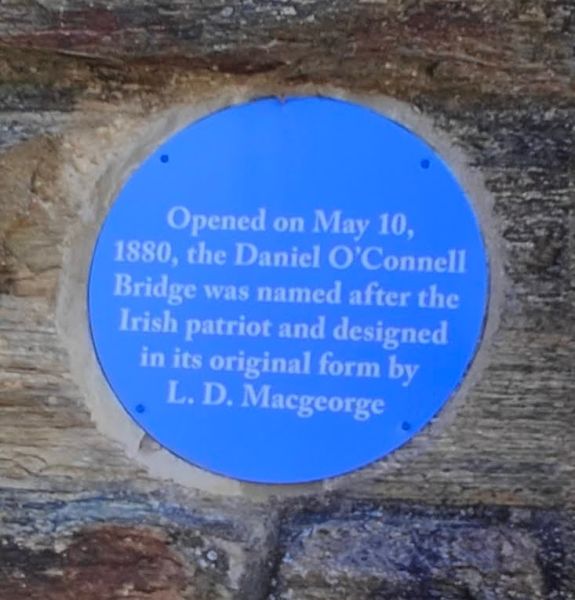
天舒哥:“桥对面拍过来效果更好。”
跟着天舒哥过桥:

天舒哥拍小红:
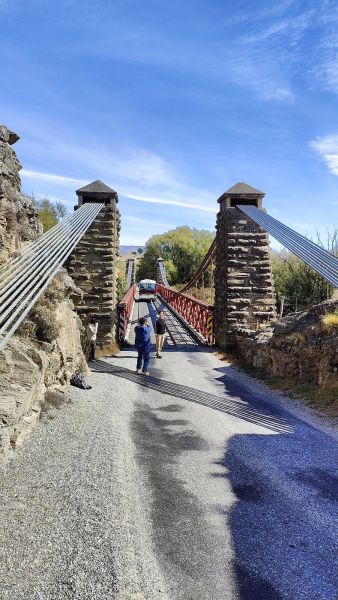
阿立放哨:

阿立注:这是以防万一。若前方来车了,阿立得火急鸡毛信,‘鬼子进村喽!’要不天舒哥看小红目不转睛,后防空虚就不好玩了。
如上图所示,两边的斜壁石头嶙峋,虽不能说天险,却也不是轻松能爬上去的。
天舒哥:“阿立兄敢不敢爬上去?上面拍这桥才真好看。”
此时尽管腿肚子发软、心里打鼓,嘴上岂肯认输?
爬!
手脚并用,天舒哥在后面护航,万一掉下去阿立后防也不能空虚,对吧?
终于爬上去了!
天舒哥:“阿立兄尽量往前走,但别勉强。走到哪算哪,总比下面拍起来好看。”
战战兢兢、哆哆嗦嗦,没敢走到石崖边,手机赶紧拍一张!
果然威武:

阿立补记:
依稀记得天舒哥说的好莱坞大片是《孤独的星球》。事后问谷哥,却找不到《Lonely Planet》这片子,出来的反而是个澳大利亚的旅游指南书出版商。
星球孤不孤独由得它了,找到另一个好莱坞大片:《狗的威力》(The Power of the Dog):
获得2022年奥斯卡12项提名的2021年大片《狗的威力》,虽然说的是米国西部(蒙大拿)的故事,却主要是在新西兰南岛的中奥塔哥(central Otago)拍摄的,包括鸥菲尔小镇。可惜这大片奥斯卡提名虽多多,获得奥斯卡奖的只有一个:最佳导演奖(Best Director)。11项提名落选平了奥斯卡记录(前大败记录保持者是1967年的电影《The Graduate》)。
获最佳导演奖的是新西兰著名导演简.坎皮恩(Jane Campion)。她是历史上唯一一位获得两次奥斯卡最佳导演提名的女导演,上一次被提名是1993年的电影《钢琴》(The Piano)。《钢琴》虽没有为坎皮恩赢得最佳导演奖,但让她得了另一项奥斯卡奖:最佳原创剧本(Best Original Screenplay)。
关于丹尼尔奥康奈尔大桥,新西兰文化遗产官网如此介绍(阿立懒得翻译了):
Crossing the Manuherikia River west of Ophir, the Daniel O’Connell Bridge is a single lane road bridge providing access to the small Central Otago settlement. Constructed between 1879 and 1880, this striking structure is a good example of Central Otago suspension bridge with schist masonry towers. The bridge has historical and technological significance. As was the case elsewhere in the region, gold was the reason many people originally came to Ophir, a town initially called Blacks. The residents campaigned for local services, including infrastructure such as roads and bridges. A bridge over the Manuherikia River was a high priority, and locals lobbied the Vincent County Council. Bridges were particularly important to communities in Central Otago as the landscape was crossed by major rivers – the Clutha, Kawarau and Manuherikia. Bridges provided links between communities and links to markets – improving communication and access. The lobbying came to fruition when in 1878 the Vincent County Engineer, Leslie Duncan Macgeorge (1854-1939), designed this 65.5-metre bridge, which was constructed by J. S. Derby and R. Edgar of Timaru. The cost of the bridge was approximately £7,000. At the opening of this structure in May 1880, the bridge was named after Irish hero, Daniel O’Connell (1775-1847). This was an appropriate and seemingly popular choice, because the bridge was located in an area heavily populated by Irish Catholic immigrants. The Daniel O’Connell Bridge is a single lane suspension bridge with schist masonry towers, one of several similar bridges that Macgeorge designed. It is four metres wide with a 65.5 metre span. The bridge has 10 suspension cables on each side, fed over the top of pairs of towers on either end. The northern approach to the structure is through a narrow cutting through rock. The cables are anchored into the rock. On the Omakau side of the river the cables are anchored into masonry that is visible above ground. Like many of its contemporaries, by the early twentieth century the bridge’s timber transoms and stiffening truss had degraded. Watson Rhodes and Company replaced the timber transoms with steel equivalents in 1905. There has been little further alteration to the structure since, aside from several replacements of the timber deck. The Daniel O’Connell Bridge is a handsome and popular local landmark. It has some engineering importance as an example of the vernacular form of late nineteenth century Central Otago bridge that notable engineer Macgeorge excelled in designing. In 2015, the Daniel O’Connell Bridge remains a landmark structure, linking Ophir to the settlements on the west of the Manuherikia River.
欲知后事如何,请听下回分解。
下集《鸥菲尔小镇摆拍 无酒牛肉面小白提神》:
https://overseaswindow.com/home/nodebody/38074/1592
